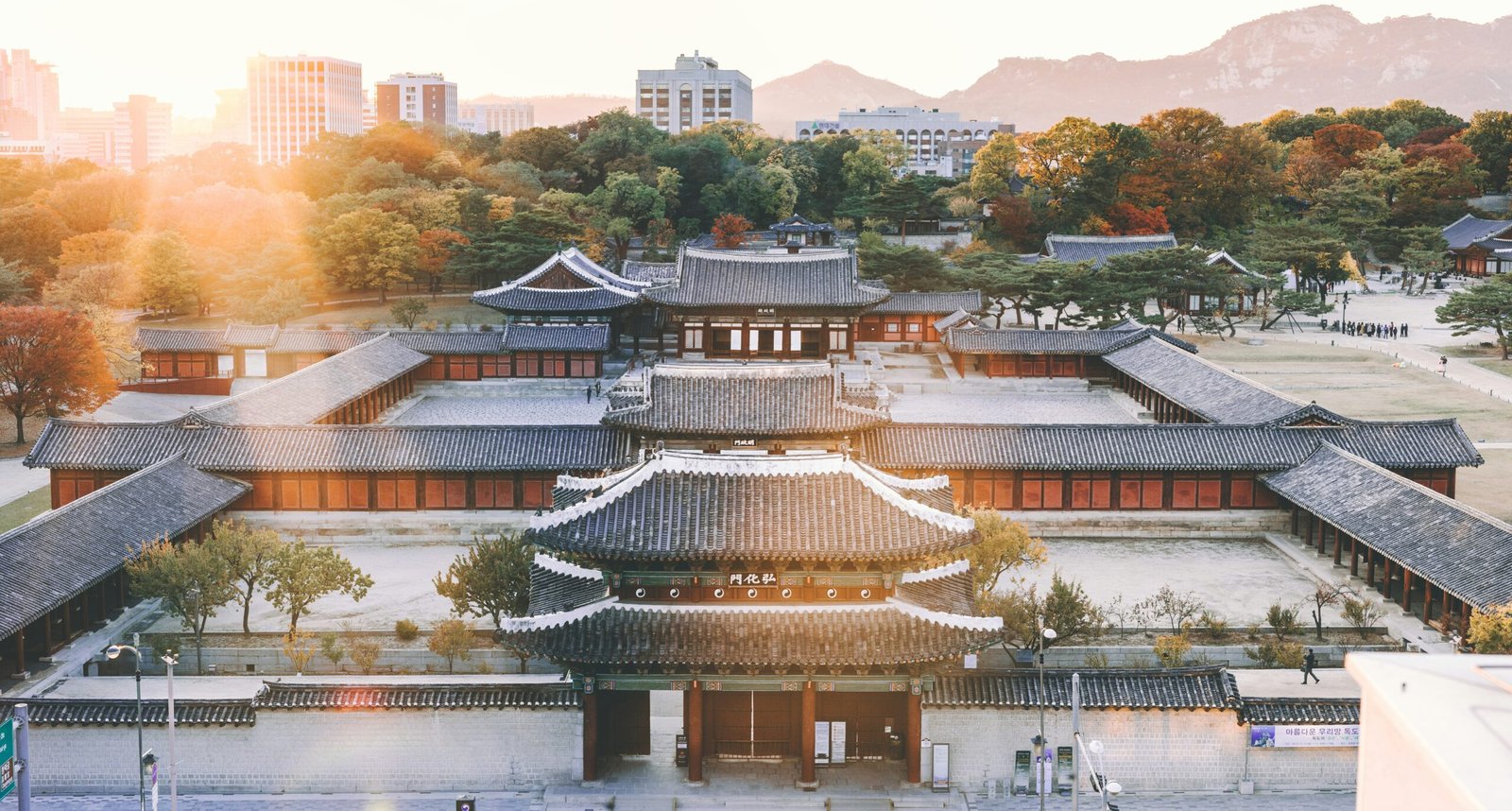Introduction to Angkor Temples Complex
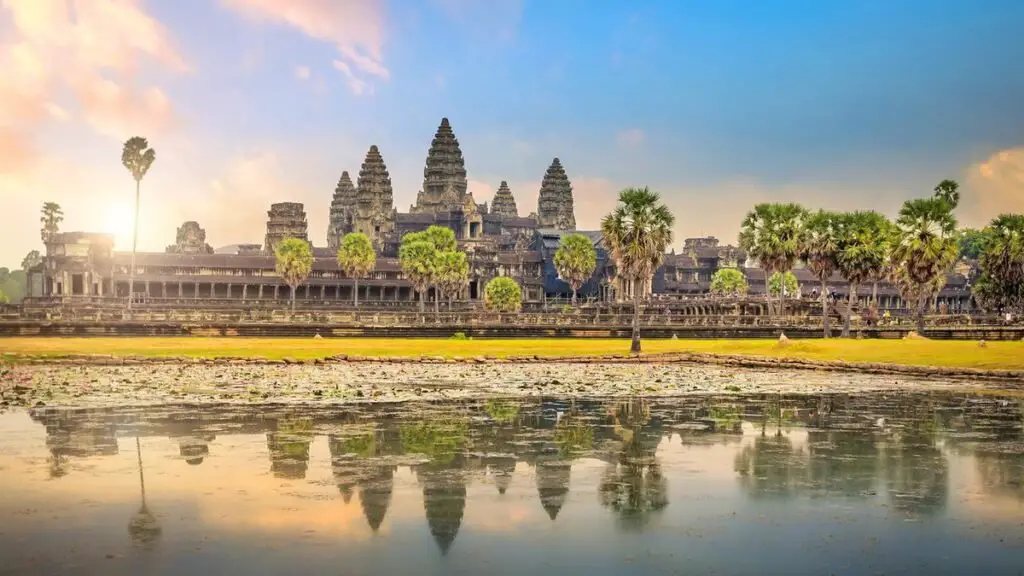
The Angkor Temples Complex, situated in Siem Reap, Cambodia, stands as a marvel of ancient architecture and an enduring testament to the ingenuity of the Khmer Empire. Dominating the landscape from the 9th to the 15th century, this sprawling archaeological wonder was the epicenter of the expansive Khmer civilization. Spanning over 400 square kilometers, Angkor is more than just a series of temples; it is an extensive network that includes sophisticated hydraulic systems, grandiose religious structures, and intricate communication routes, all meticulously crafted over centuries.
The historical significance of the Angkor Temples Complex cannot be overstated. As one of the most critical archaeological sites in Southeast Asia, it offers an unparalleled glimpse into a civilization that balanced urban planning, engineering prowess, and cultural richness. The scale and complexity of Angkor are remarkable; dozens of temples such as the iconic Angkor Wat, the enigmatic Bayon, and the sprawling Ta Prohm punctuate the landscape, each with its own unique architectural style and historical narrative.
Beyond the ubiquitous temples, the complex also showcases an advanced understanding of hydraulics through its vast network of reservoirs, canals, and spillways, which were integral to the region’s agriculture and sustainability. These engineering feats highlight the Khmer Empire’s innovative approach to resource management, allowing them to support a large population and prosperous economy for several centuries.
This intricate tapestry of history and architecture not only captivates scholars and archaeologists but also attracts millions of tourists annually. Each structure, stone carving, and ancient inscription within the Angkor Temples Complex tells a story of a bygone era, drawing visitors into the rich cultural and historical context of one of the world’s most impressive archaeological achievements. As you venture into this historical labyrinth, the grandeur of Angkor is bound to leave an indelible mark on your journey through Southeast Asia’s storied past.
Key Temples and Monuments
The Angkor Temples Complex, a UNESCO World Heritage site in Cambodia, is home to a myriad of historically and architecturally significant structures. Among them, Angkor Wat stands as the largest religious monument in the world, exemplifying the pinnacle of Khmer architecture. Constructed in the early 12th century by King Suryavarman II, Angkor Wat was initially dedicated to the Hindu god Vishnu before being transformed into a Buddhist temple. The temple’s grandeur is evident in its central quincunx towers, extensive bas-relief galleries, and nearly 2000 celestial nymphs, or apsaras, exquisitely carved into its walls. Particularly striking is the depiction of the Churning of the Ocean of Milk, a significant Hindu myth, intricately etched into the temple’s western gallery.
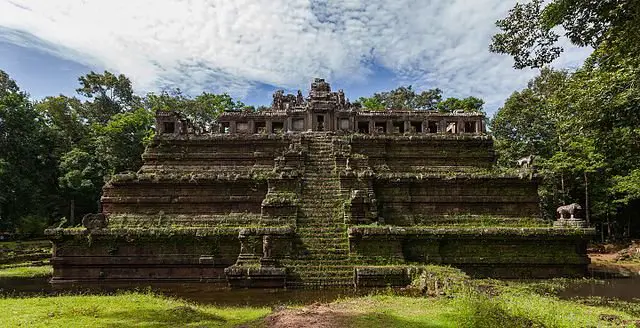
From Wikimedia Commons
Further north lies Angkor Thom, the grand, fortified city established by King Jayavarman VII in the late 12th century. The city is renowned for its labyrinthine layout, flanked by monumental gates adorned with statues of devas and asuras engaged in a cosmic tug-of-war. At its center stands the enigmatic Bayon Temple, identifiable by its 54 towers, each carved with serene, smiling faces that are believed to represent Jayavarman VII himself, merged with the bodhisattva Avalokiteshvara. The Bayon’s bas-reliefs provide a vivid account of historical events and daily life in the Angkorian period.
Equally captivating is Ta Prohm, a temple that has been left in much the same condition as when it was rediscovered, overgrown by roots of towering trees. Built in the late 12th century, also by Jayavarman VII, Ta Prohm served as a Buddhist monastery and university. Its mystical ambiance, with massive silk-cotton and strangler fig trees entwined among the ruins, evokes a mesmerizing blend of human craftsmanship and natural reclamation.
Lastly, Banteay Srei, often referred to as the “jewel of Khmer art,” is distinguished by its intricate pink sandstone carvings. Located about 25 kilometers from the main Angkor temples, this 10th-century temple is dedicated to the Hindu god Shiva. The precision and detail in its relief work, featuring depictions of Hindu deities, mythological scenes, and delicate floral patterns, highlight the exceptional artisanship of its creators. Despite its smaller size, Banteay Srei captivates visitors with its refined beauty and rich symbolism.
Collectively, these key temples and monuments not only epitomize the architectural splendor of the Khmer Empire but also offer invaluable insights into the cultural and spiritual heritage of Southeast Asia.
Practical Tips for Visiting Angkor Temples
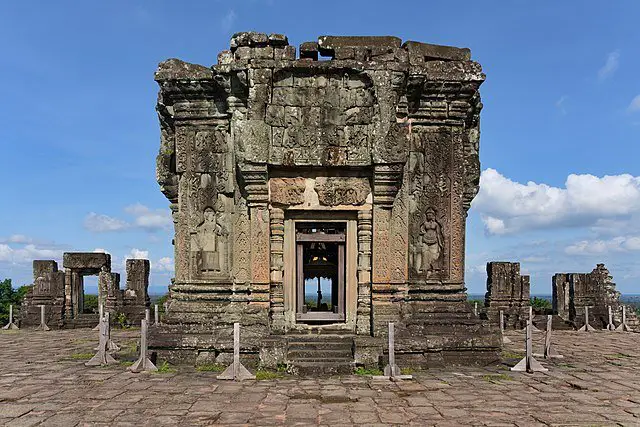
For travelers planning to explore the Angkor Temples Complex, timing your visit is crucial to both enjoying favorable weather conditions and avoiding crowded periods. The best time to visit is during the dry season, typically from November to April, when the weather is cooler and less humid. On the contrary, the rainy season from May to October, although quieter, can present challenges with accessibility and mud-covered paths.
Entrance tickets for the Angkor Temples Complex can be purchased at the official ticket office located near Siem Reap. There are several ticket options available: a one-day pass, a three-day pass (valid for a week), and a seven-day pass (valid for a month). The three-day and seven-day passes are ideal if you want to thoroughly explore the grandeur and intricacies of numerous temples. It’s important to note that the passes cover major sites such as Angkor Wat, Angkor Thom, and Ta Prohm, among others.
Depending on the duration of your stay, you’ll need an itinerary to make the most out of your visit. For a one-day visit, focus on the highlights: Angkor Wat at sunrise, followed by Angkor Thom and Ta Prohm. A three-day itinerary should include additional temples such as Banteay Srei and Preah Khan. For a more extended seven-day stay, you can explore more remote temples like Beng Mealea and Koh Ker as well.
Transportation within the Angkor Temples Complex is varied. Tuk-tuks are a popular and convenient option, providing a quick way to move between temples. Renting a bicycle is another enjoyable way to explore, giving you the flexibility to travel at your own pace, though it requires good physical condition. For an informative experience, consider hiring a guided tour; professional guides offer in-depth knowledge and context about the historical and cultural significance of the sites.
While visiting the temples, it is crucial to dress appropriately. Both men and women should cover their shoulders and knees to adhere to local customs and out of respect for the sacred nature of the sites. Additionally, always follow temple etiquette: refrain from touching carvings, stick to designated paths, and maintain a quiet demeanor.
Preservation and Sustainable Tourism Efforts
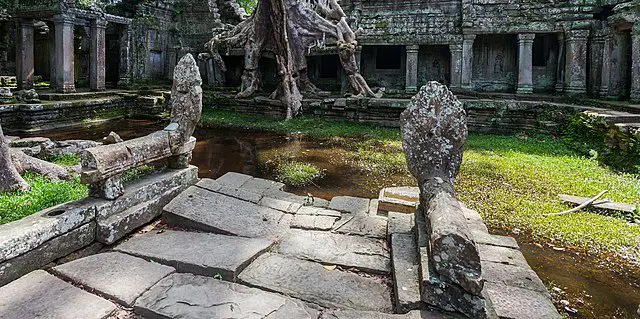
The Angkor Temples Complex, a UNESCO World Heritage site, stands as a testament to the ingenuity and grandeur of the Khmer Empire. However, the preservation of these historical marvels faces significant challenges. Environmental factors like weathering, vegetation growth, and human impact from the millions of tourists who visit annually pose substantial threats to the site’s integrity. In response, local and international organizations have undertaken comprehensive initiatives to preserve and protect Angkor’s architectural heritage.
Environmental elements are among the primary threats to the preservation of the Angkor Temples. Weathering, caused by extensive exposure to sun, rain, and wind, gradually erodes the intricate carvings and structural components of the temples. Additionally, unchecked vegetation growth can accelerate degradation, as roots infiltrate and destabilize the stone structures. Teams of conservationists actively combat these challenges through state-of-the-art restoration projects and conservation techniques, such as chemical treatments to prevent moss and lichen growth, structural reinforcements, and detailed documentation of each temple’s condition.
Moreover, the impact of mass tourism cannot be overlooked. With millions of visitors annually, the sheer volume of foot traffic exacerbates wear and tear on the ancient pathways and structures. Consequently, various measures have been implemented to mitigate human impact. Authorities have established guidelines urging visitors to adhere to specific pathways, abstain from physically touching the carvings, and respect restricted areas. Collaborative efforts between local communities and international bodies, such as UNESCO and the Apsara Authority, facilitate educational programs that promote awareness about the importance of preserving Angkor’s cultural heritage.
Responsible tourism plays a pivotal role in ensuring the longevity of the Angkor Temples Complex. Travelers are encouraged to contribute to preservation efforts by supporting local communities through sustainable practices, such as purchasing local crafts and services, and minimizing their environmental footprint. By respecting guidelines and adopting eco-friendly habits, tourists can help safeguard this historical marvel for future generations. Conscious travelers who prioritize preservation can make a lasting difference, ensuring that the Angkor Temples remain a source of inspiration and awe for years to come.

